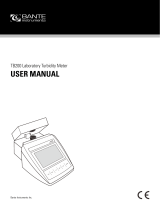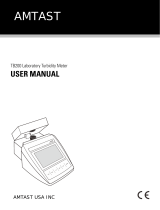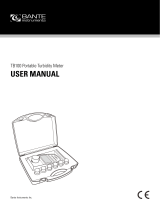
Turbidity Measurement
An accurate turbidity measurement depends on good measurement techniques. Factors such as clean sample vials, positioning of vial in the sample chamber,
covering the vial with the light shield lid, meter calibration, removal of bubbles, etc. For more information, please refer to page 7 “Important Notes for
Measurement and Calibration”.
Measurement - low turbidity samples
For the low turbidity samples, we recommend using the same vial to perform the measurement and calibration.
1.1. Rinse the vial with approximately 10ml of the sample, capping the vial with the screw cap and gently inverting it several times. Discard the used sample
and repeat the rinsing procedure two more times.
1.2. Fill the vial with the sample. Cap the vial.
1.3 Allow the vial to stand undisturbed for 1 minute so that bubbles can disappear.
1.4 Wipe the vial with the lint-free cloth to remove waterdrops and fingerprints. Ensure that the outside of the vial is dry and clean.
1.5 Place the vial in the sample chamber. Align the mark on the vial with the arrow on the meter.
1.6 Close the light shield lid. Press the Meas key to start the measurement.
1.7 During the measurement process, press the key. The measured value will be locked. Press the key again, the meter resumes measuring.
Measurement - high turbidity samples
The high turbidity samples (>2000 NTU) must be diluted prior to measurement. The dilution water can be obtained by filtering deionized water through a
< 0.45 µm filter membrane.
2.1 Repeat steps 1.1 to 1.6 above and record the measured value.
2.2 Calculate the true turbidity of the original sample use the formula below:
T=
Where:
T = Ture turbidity of the original sample
Td= Measured value
Vs= Volume of the original sample (mL)
Vd= Volume of the dilution water (mL)




















